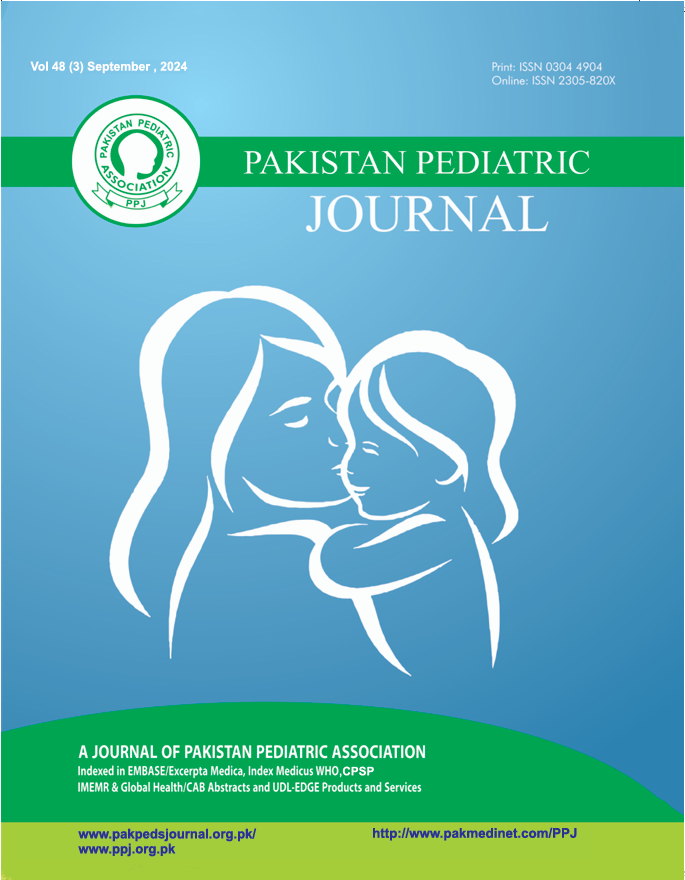Outcome of management of intussusception in children presenting to a tertiary care hospital
Abstract
Abstract
Background: Intussusception is a common cause of intestinal obstruction in children, posing significant risks of morbidity and mortality if not treated promptly. The standard treatment involves hydrostatic or pneumatic reduction, though open surgery remains prevalent in developing countries. This research examines the clinical presentation, management strategies, and early outcomes at our tertiary care center, highlighting the challenges encountered in managing this condition.
Methods: A prospective cohort study was done at the Department of Pediatric Surgery, The Children’s Hospital, Lahore, from October 2023 to June 2024. The study included patients of both genders aged up to 12 years with intussusception. Ethical approval was obtained prior to the study. Data were analyzed using SPSS version 29.
Results: A total of 80 patients with intussusception were included. The male-to-female ratio was 1.3:1. The median age of presentation was 9 months. The median duration of presentation was 3 days (mean 3.13 days ± 1.23). Idiopathic intussusception was found in 66 patients (82.5%), and pathological lead points (PLP) were identified in the remaining cases. The diagnoses were made clinically and radiologically by abdominal ultrasound. All patients underwent surgical treatment. Ileo-colic intussusception was encountered in the majority (71.3%). About half of the intussusceptions (42; 52,6%) could be reduced manually. Bowel resection was required in 38 (47.6%) patients. The complication rate was 17.5%, including surgical site infection (5%), anastomotic leakage (3.8%), and stoma complications (1.3%). The median length of stay was 4 days (mean 4.5 days ± 2.03). One patient expired after redo surgery for postoperative gut necrotizing enterocolitis.
Conclusion: Most of our patients presented late, leading to bowel necrosis in about half of the cases. Although half of the patients underwent manual reduction of intussusception, hydrostatic reduction could not be performed due to late presentations. Furthermore, secondary complications complicated the postoperative recovery of a few patients.


